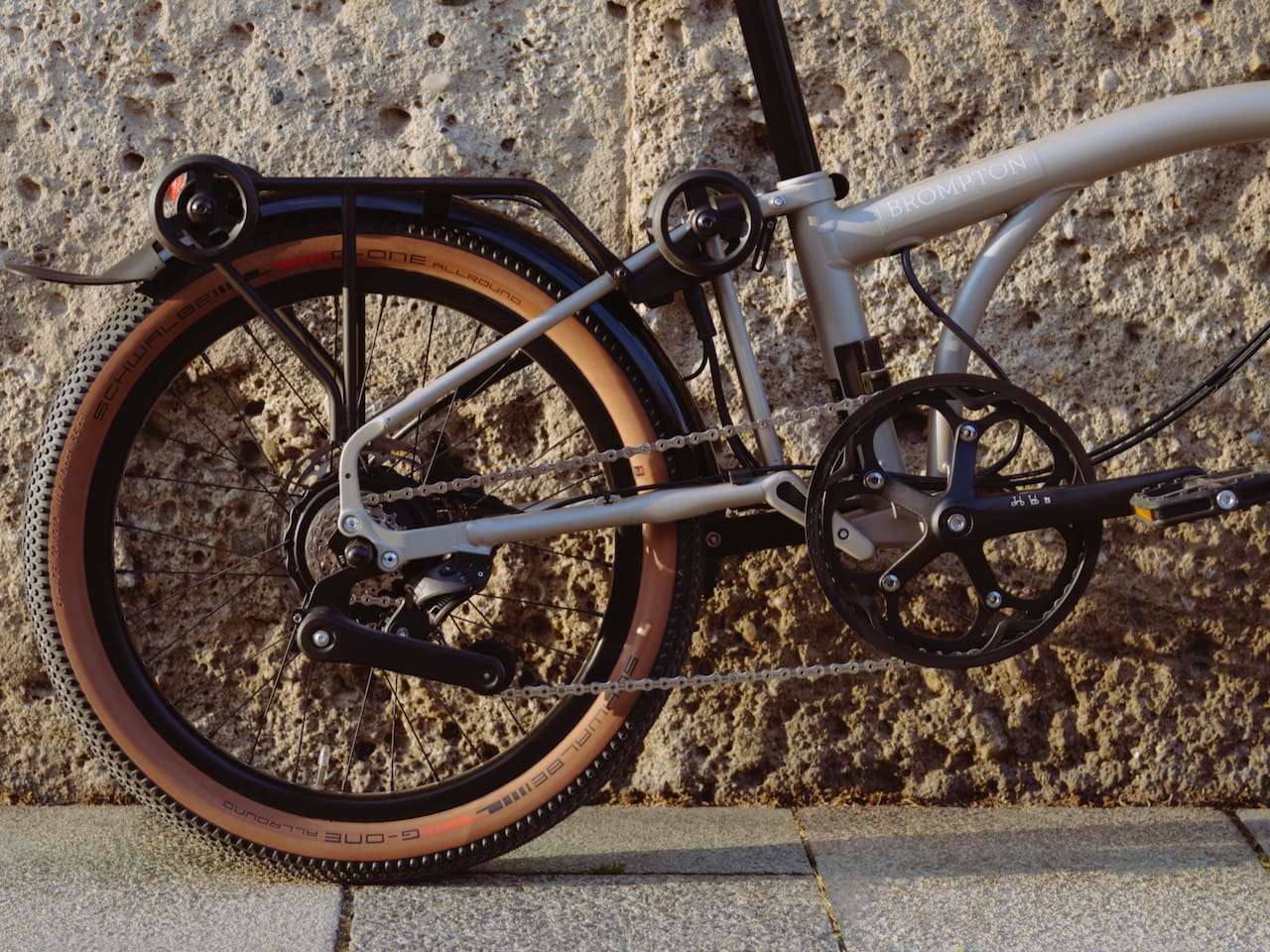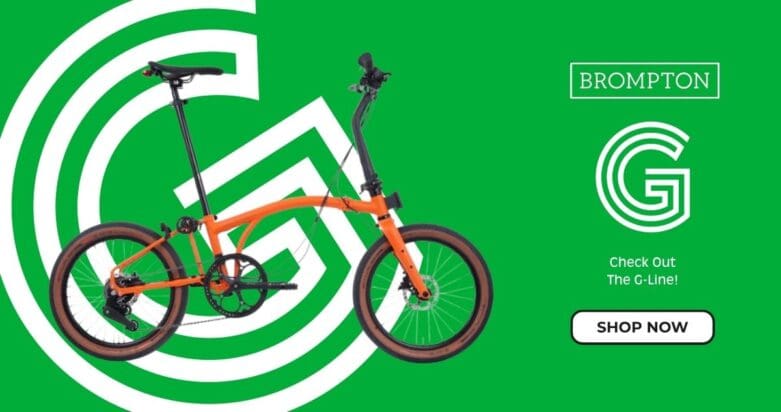Whether navigating Canada’s bustling cities or exploring its rugged outdoors, the Brompton G-Line stands out as the ultimate choice. But, this bike won’t be easy to find at your local store! With extremely limited Canadian allocations, pre-orders are likely to sell out before the G-Line even arrives. Pedaal is guaranteed a significant allocation, thanks to its long-standing relationship with Brompton. At the time of writing, we’re the only store with a G-Line you can try! That’s right, we flew to the UK and brought one back. Read more below!
G, is it for Me??
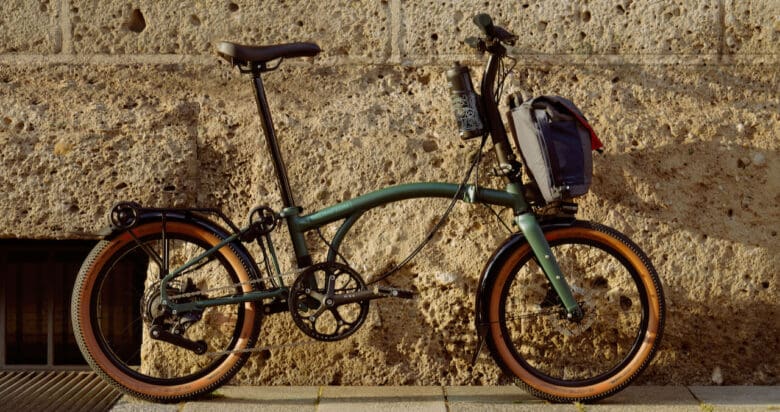
What are the Origins?
 It’s almost certain that Brompton has been surprised and inspired by how many riders use their bikes for long-distance touring. Take, for instance riders like the Brompton Traveller, who toured all five continents, Miriam Kennedy, who tackles Ireland’s steep hills, and Susanna Thornton, who explores Wales, the Lake District, and Scandinavia. Originally, Andrew Ritchie designed the Brompton for London commuters, not for global adventures. At Pedaal, we’ve also embarked on long-distance Brompton rides. (So have our parents). Many of these were far from home or overseas, so it’s wonderful how absolutely frictionless transporting a Brompton is by car, train, or plane. Brompton saw the growing demand and realized they needed a bike built for the long-distance, multi-terrain cyclists; but without losing the portability that made their bike famous. The solution? A larger wheel.
It’s almost certain that Brompton has been surprised and inspired by how many riders use their bikes for long-distance touring. Take, for instance riders like the Brompton Traveller, who toured all five continents, Miriam Kennedy, who tackles Ireland’s steep hills, and Susanna Thornton, who explores Wales, the Lake District, and Scandinavia. Originally, Andrew Ritchie designed the Brompton for London commuters, not for global adventures. At Pedaal, we’ve also embarked on long-distance Brompton rides. (So have our parents). Many of these were far from home or overseas, so it’s wonderful how absolutely frictionless transporting a Brompton is by car, train, or plane. Brompton saw the growing demand and realized they needed a bike built for the long-distance, multi-terrain cyclists; but without losing the portability that made their bike famous. The solution? A larger wheel.
How does it Compare?
We can never tire of saying that the true measure of a good folding bike is three essential things. First, a compact folded size shouldn’t compromise ride quality. Second, a folding bike with excellent ride quality still requires a compact folded size. And finally, the transfer between folded to unfolded or vice-versa has to be easy, quick and exact. But, this presents an engineering paradox. A bike with small wheels has natural acceleration and great agility, but these assets only come out if the bikes wheelbase – the distance from axle to axle – is long. But, a long wheelbase requires that the bike unfolds big. Yet the same bike also has to fold small. –Very small; and, do so easily. Basically, a folding bike needs to unfold big and fold up small. Everyone else makes a big that folds big and unfolds small. And, that more or less defeats the purpose.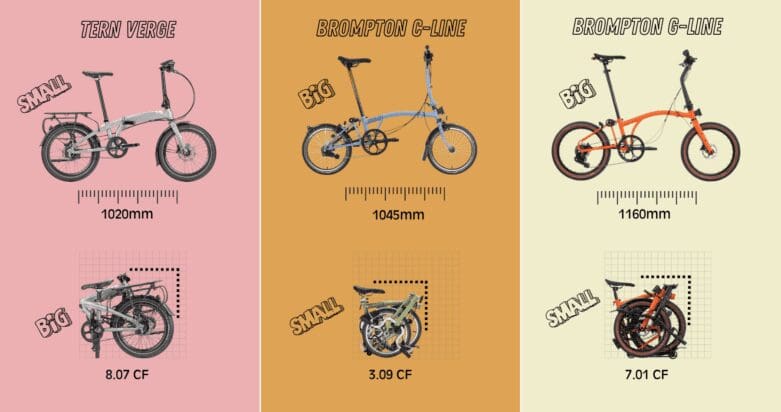 The G-Line follows the same engineering mandate as the original Brompton, but unlike the original Brompton, the G-Line aims to satisfy its long-distance riders while challenging competitors like Dahon and Tern. These competitors have long dominated the recreational folding bike market. All the same, one of the reasons why you’ll never hear about someone touring the world on a Tern is because the original Brompton, even with its smaller wheels, still rides better with its longer wheelbase. Despite looking bigger, a Tern’s wheelbase is 1025mm, whereas a 16″ wheeled Brompton’s is 1045mm. That plants more bike on the ground and brings the wheels acceleration and agility to life. Added to this, a 16″ wheeled Brompton folds to a teensy tiny 3.09 cubic feet whereas a Tern folds to a whopping 8.07 cubic feet. At this folded size and wheelbase, a Tern bike isn’t nice to ride or exactly easy to carry, especially since it lacks Brompton’s “rolling mode.“
The G-Line follows the same engineering mandate as the original Brompton, but unlike the original Brompton, the G-Line aims to satisfy its long-distance riders while challenging competitors like Dahon and Tern. These competitors have long dominated the recreational folding bike market. All the same, one of the reasons why you’ll never hear about someone touring the world on a Tern is because the original Brompton, even with its smaller wheels, still rides better with its longer wheelbase. Despite looking bigger, a Tern’s wheelbase is 1025mm, whereas a 16″ wheeled Brompton’s is 1045mm. That plants more bike on the ground and brings the wheels acceleration and agility to life. Added to this, a 16″ wheeled Brompton folds to a teensy tiny 3.09 cubic feet whereas a Tern folds to a whopping 8.07 cubic feet. At this folded size and wheelbase, a Tern bike isn’t nice to ride or exactly easy to carry, especially since it lacks Brompton’s “rolling mode.“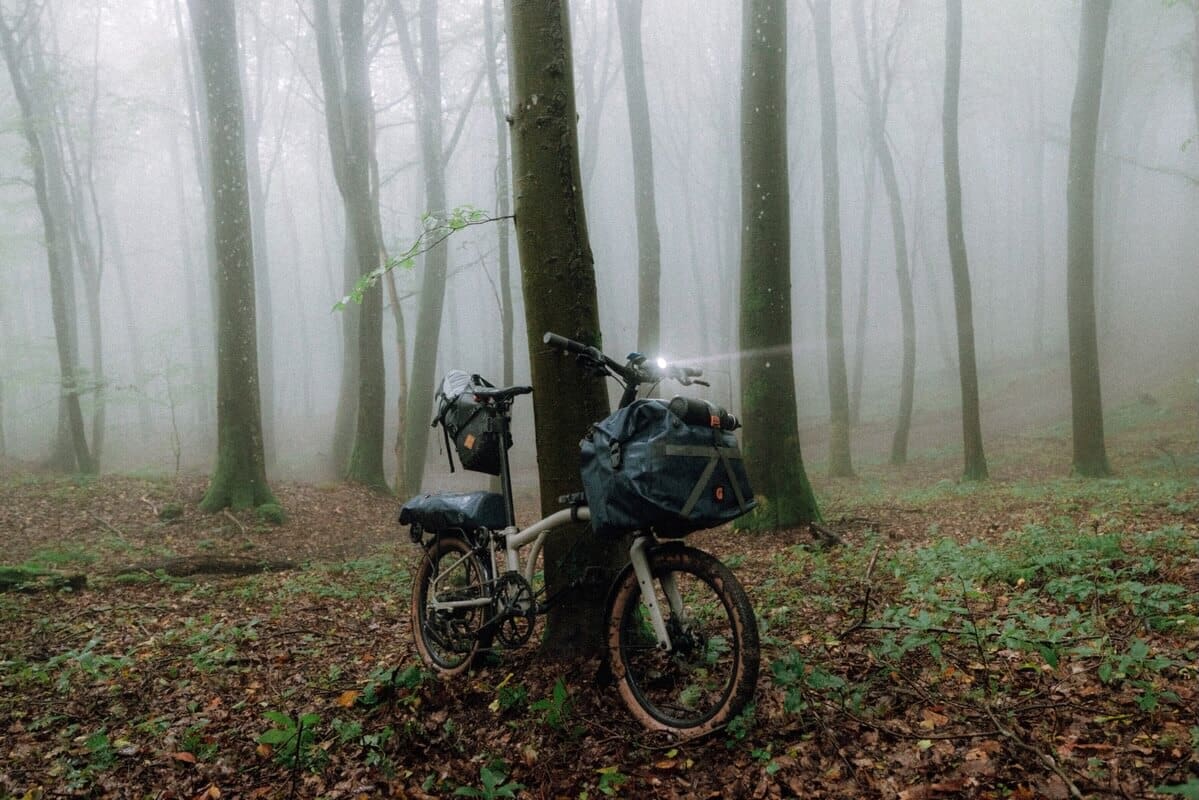
The Spec
Proof that Brompton is an eccentric company might be that there has never been once since 1976 – the year Brompton began – that it has ever had a Shimano brake-set or drivetrain part on it. (Shimano is a Japanese company that has a near-monopoly on the bicycle industry). Instead, Brompton opted to develop their own parts, partly to keep tolerances tight and the overall bike lighter. The G-Line changes gear here. It uses a very wide range Shimano Alfine-8 hub, a set of hydraulic disc brakes, wider Schwalbe tires with some decent grip, bigger pedals, and tube-less rims.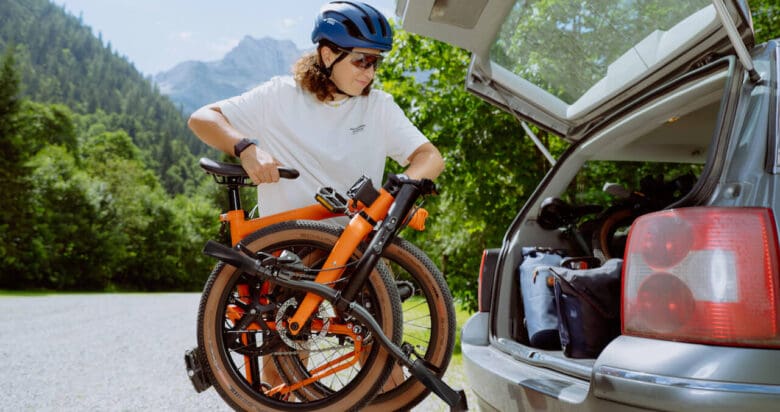 How does it ride? Wired calls it a “stupid amount of fun,” but no one says it better than Downtown who will quote verbatim: “From the very first crank spin, you’ll notice the bike’s direct handling. The Brompton follows steering input directly and precisely, which is partly due to the small wheels and extremely practical in dense city traffic. Compared to conventional Brompton models with 16″ wheels, however, the G-Line is more composed and inspires more confidence, especially on uneven surfaces and over tracks and kerbs. The wide tires provide additional comfort with their good damping properties and also generate good traction on tarmac.” In short, the ride is on spec.
How does it ride? Wired calls it a “stupid amount of fun,” but no one says it better than Downtown who will quote verbatim: “From the very first crank spin, you’ll notice the bike’s direct handling. The Brompton follows steering input directly and precisely, which is partly due to the small wheels and extremely practical in dense city traffic. Compared to conventional Brompton models with 16″ wheels, however, the G-Line is more composed and inspires more confidence, especially on uneven surfaces and over tracks and kerbs. The wide tires provide additional comfort with their good damping properties and also generate good traction on tarmac.” In short, the ride is on spec.
